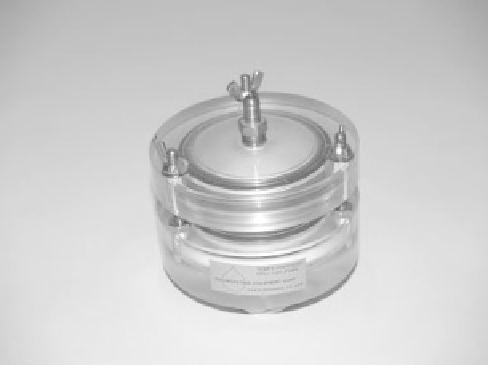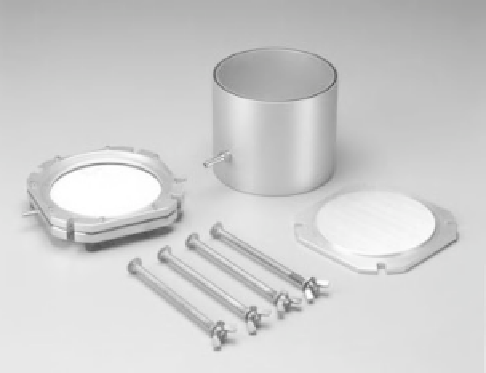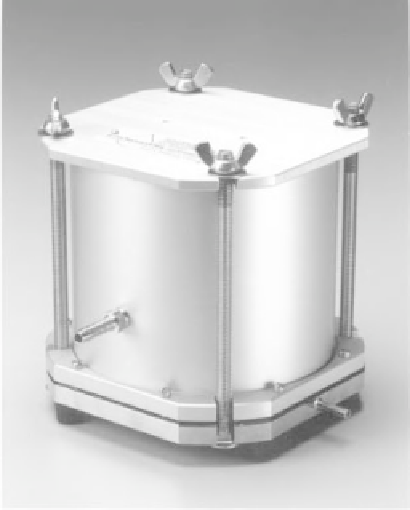Environmental Engineering Reference
In-Depth Information
(a)
(a)
(b)
Figure 5.70
Assemblage of a Tempe pressure cell: (a) disas-
sembled components of a Tempe cell; (b) assembled Tempe cell.
(Courtesy of SoilMoisture Equipment Corporation, Santa Barbara,
CA).
(b)
Constant air pressure
supply
Figure 5.72
Assemblage of volumetric pressure plate extractor:
(a) disassembled components of volumetric pressure plate extrac-
tor; (b) assembled volumetric pressure plate extractor. (Courtesy
of SoilMoisture Equipment Corporation, Santa Barbara, CA).
Air pressure
inlet tube
Enlaged soil particle
in specimen
Water film
Clamping
wing nut
Soil specimen
held in retaining
cylinder
There is no single, unique SWCC; rather, there is an infi-
nite number of scanning curves contained within a drying
(desorption) boundary curve and an adsorption (wetting)
boundary curve (Fig. 5.77). It is the primary drying and
wetting curves that are of greatest relevance in unsaturated
soil mechanics. The drying SWCC is easier to measure in
the laboratory and has become the primary curve used in
estimating unsaturated soil property functions.
1- Bar high-2
air-entry disk
O-ring cylinder
seal
O-ring porous
plate seal
Water compartment
Water outlet
drain tube
Water outflow
(atmospheric)
5.8.1 Tempe Cell Apparatus and Test Procedure
The term “Tempe cell” refers to a particular pressure plate cell
that was designed and built by Reginato and van Bavel (1962)
Figure 5.71
Cross-section of a Tempe pressure plate cell manu-
factured by SoilMoisture Equipment Corporation.














Search WWH ::

Custom Search